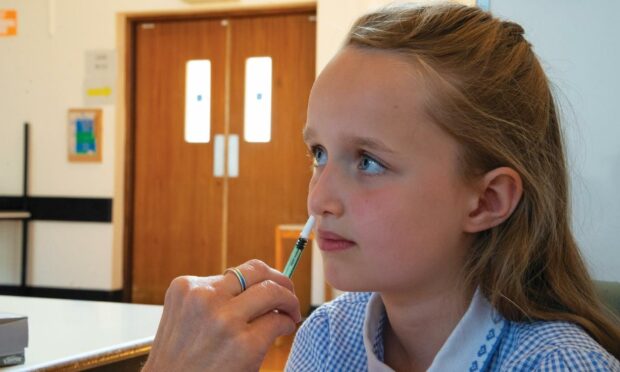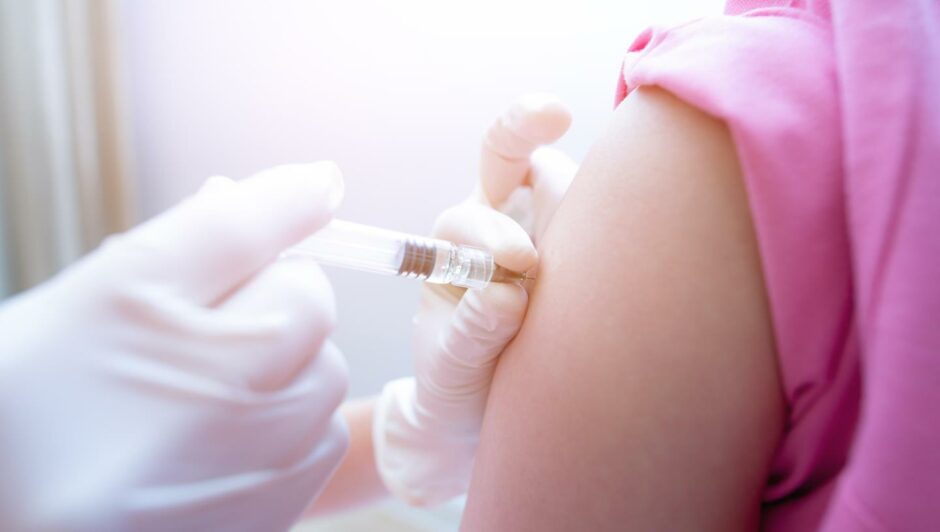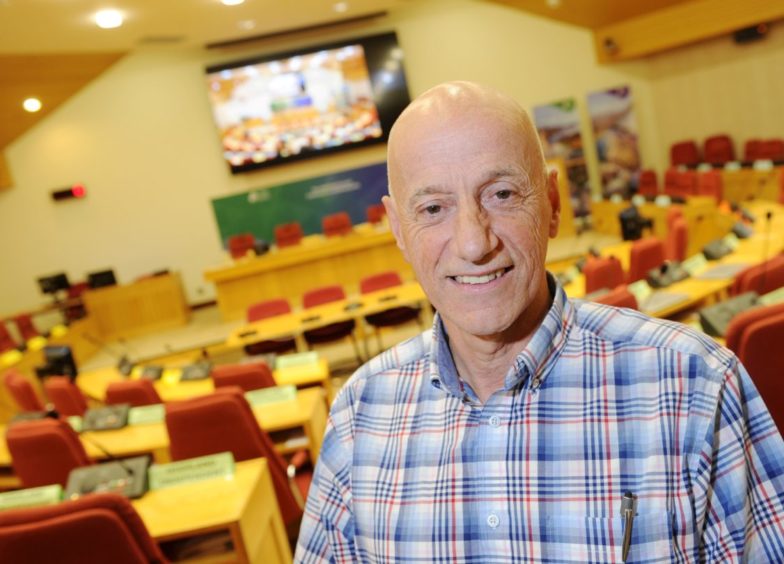North pupils could be missing out on crucial support – because school nurses are too busy with vaccines.
Less than a decade ago, delivering vaccinations made up less than a third of the job.
But now, 75% of Highland school nurses’ time is spent on different types of preventative jabs.
In a new report, Highland Council’s head of health warned this week that the health workers are under “immense pressure”.
They have less time to support children’s emotional health and wellbeing as the vaccination programme ramps up.
The stark challenge was laid before the council’s health committee.
In 2012, Highland school nurses delivered around 7,000 vaccines, accounting for less than a third of their workload.
Fast forward to today, and that figure has shot up to 25,000 jabs – and 75% of their availability.
What has changed?
The school vaccine programme has expanded considerably in the past decade.
School nurses now administer the flu jab to all primary school pupils.
Pupils in secondary school are given the human papillomavirus (HPV) vaccine when they are in S1 or S2, to protect against cancers caused by HPV.
This includes cervical cancer but also a range of other cancers, which is why boys are vaccinated too.
In third year, pupils are given their fifth and final dose of vaccines to protect against tetanus, diphtheria, polio and meningitis.
Highland Council has 250 health professionals, including 37 school nurses working part-time and full-time.
From September, the council’s health teams will also provide the flu jab to all secondary school pupils.
Squeeze on the working day
Jane Park is head of health at the Highland Council. Ms Park says the expanded vaccination programme has squeezed what health visitors can fit into their day.
“The vaccination programme is placing immense pressure on the capacity of the school nursing workforce to actually deliver on health inequalities and reducing child poverty,” she said.
Ms Park said there’s also less time for nurses to provide support and advice on mental health, diet and sexual health.
On a more positive note, Ms Park said the role of school nurses is more clearly defined. The Scottish Government has also provided extra funding, allowing the council to hire 11 more full time nurses. The council has also recruited four nurses to directly support ‘care experienced’ young people.
Pandemic support
During the pandemic, the council’s health professionals were instructed by the Scottish Government to focus on protecting young people who are most vulnerable. Even at the height of lockdown, health visitors made 225 home visits each week and 800 virtual appointments.
Allied health professionals – who provide services such as speech and language therapy, occupational therapy, physiotherapy and dietary advice – had more than 1,000 remote contacts a week.
Overall, the council report says that 90% of their health staff were available throughout the pandemic.
Highland school nurses will have a stronger focus on reducing health inequalities and child poverty as the country recovers.
“The pandemic gave us an opportunity to see how we can do things a little bit differently,” says Ms Park. “We’re looking at health inequalities and how we can do things in a more early intervention and prevention way. How to get in about families differently.”
‘There was never enough of them’
However, Ms Park acknowledged that it was difficult to deliver these goals when the vaccination programme accounts for three quarters of the working day.
Councillors John Finlayson and Denis Rixson said this discussion was of particular interest to them as former teachers.
“I’ve always had a keen interest in the role of health visitors and school nurses,” Mr Finlayson said. “That’s mainly because there was never enough of them. I always had a concern that they were really stretched.”
Another head teacher turned councillor, Denis Rixson raised similar concerns. Mr Rixson also highlighted an 11% vacancy rate in health visitors as a worry.
Ms Park said the service is heading in the right direction but would need another two to four years before the workforce would stabilise. She added that council brought in 10 new trainee school nurses in September, and this would really help shore up the service.
No electronic records
Another drain on Highland school nurses’ time is the old-fashioned patient record system. There is no electronic system, so staff have to wade through 50,000 paper records.
“I’m really surprised to hear there’s no electronic health records,” said Mr Finlayson. “I can just imagine the wad of paper in everyone’s office and briefcase. That’s something we really need to move forward with.”
Council chief executive Donna Manson reassured the committee that this is in hand. Ms Manson says the council is working with Digital Office Scotland to move to digital records as a priority. They are also exploring new innovations such as voice activated record keeping.
“We want to reduce staff’s time on the business bit of their jobs because they want to spend more time to spend with families – that’s what we all want,” said Ms Manson.
Ms Park said the health team is delivering despite the challenges. “Our school nurses are out there in schools, giving advice, guidance and support to our young people and their families,” she said.
More from the Schools & Family team
Covid in schools: Highlands and Islands see spike in Covid absences
‘Humbling and inspiring’: Aberdeen musicians go global for Remembrance
Going wild in the classroom: Mum’s lockdown brainwave inspires new wildlife resource


